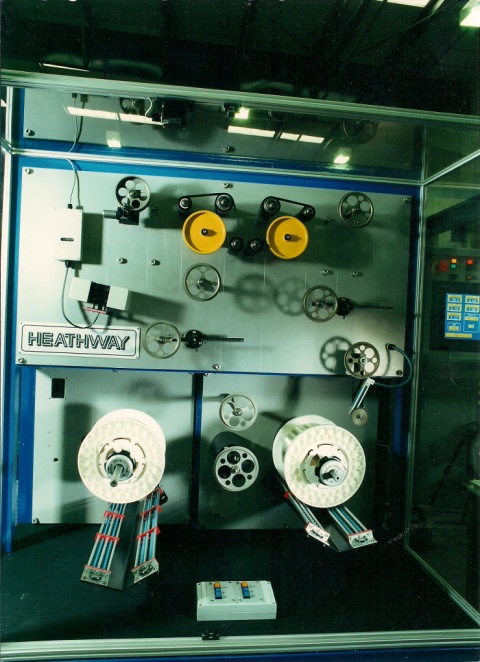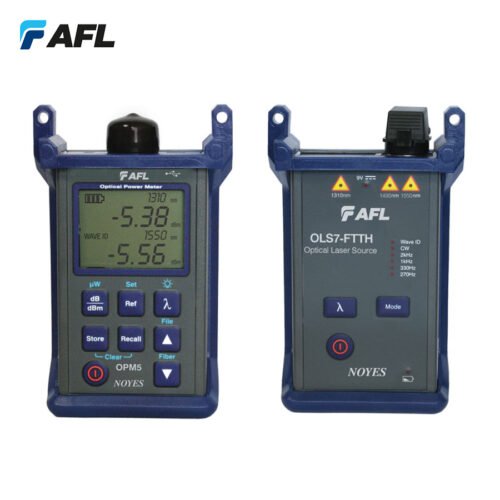Recognizing Exactly How an Optical Measurement System Enhances Accuracy in Industrial Applications
Optical measurement systems play a vital role in improving precision across numerous commercial applications. By leveraging innovative modern technologies such as laser interferometry and 3D imaging sensing units, these systems use high-resolution, non-contact measurements. This capability decreases the threat of damaging delicate components while guaranteeing accuracy. The influence of these systems extends past plain measurements. Discovering their advantages, applications, and future trends exposes an intricate landscape of advancement and challenges that values closer assessment.
The Basics of Optical Measurement Systems
Optical measurement systems offer as essential devices in different commercial applications, giving specific information collection and analysis. These systems use light as a primary ways of measurement, leveraging optical concepts to analyze dimensions, settings, and surface attributes of items. They incorporate elements such as lasers, electronic cameras, and sensors, which function with each other to record high-resolution images and information.
The modern technology enables non-contact dimensions, reducing the risk of damaging delicate elements. Optical measurement systems are functional, discovering utility in quality control, assembly confirmation, and dimensional evaluation across different sectors. They are especially efficient in settings where traditional measurement techniques might fail, such as measuring complicated geometries or observing quick movements.
As markets remain to develop, the combination of optical measurement systems will continue to be crucial for making sure accuracy and performance, inevitably enhancing product high quality and functional productivity in numerous making procedures.
Secret Technologies Behind Optical Measurement
Key technologies such as laser interferometry techniques and 3D imaging sensing units play a crucial role in the effectiveness of optical measurement systems (optical measurement system). These innovations enable precise dimensions and in-depth analysis in different industrial applications. Recognizing their capabilities is necessary for utilizing the full capacity of optical measurement systems
Laser Interferometry Techniques
Many laser interferometry techniques have transformed the area of optical measurement, offering extraordinary accuracy and accuracy in numerous industrial applications. These strategies use the disturbance of systematic light waves to gauge range, variation, and surface area abnormalities with nanometer-level precision. Common methods consist of Michelson interferometry, which divides a beam of light of light and assesses stage shifts, and Fabry-Pérot interferometry, known for its high resolution in gauging little adjustments. In addition, laser Doppler interferometry utilizes frequency changes to analyze speed, making it very useful in dynamic dimensions. The adaptability of these methods permits their integration right into varied manufacturing processes, boosting quality assurance and ensuring adherence to rigorous tolerances. Because of this, laser interferometry proceeds to play an important duty in advancing industrial measurement criteria.
3D Imaging Sensors
Advancements in measurement innovation have caused the development of 3D imaging sensors, which play a considerable role in optical measurement systems. These sensing units capture three-dimensional data with numerous methods such as triangulation, time-of-flight, and organized light. By accurately rebuilding the shape and measurements of things, 3D imaging sensors enhance the precision of dimensions in industrial applications. They offer real-time responses, assisting in quality assurance and ensuring that parts meet stringent specifications. Furthermore, their capability to operate in tough environments, such as varying lighting conditions, makes them vital in making procedures. As markets significantly take on automation, the assimilation of 3D imaging sensors into optical measurement systems is expected to drive additional renovations in performance and accuracy.
Advantages of Optical Measurement in Market
Traditional measurement methods have actually long been the criterion in commercial setups, optical measurement systems supply significant benefits that boost accuracy and efficiency. These systems use light to catch data, leading to high-resolution measurements that are usually unattainable with traditional strategies. The non-contact nature of optical dimensions minimizes the danger of damaging sensitive elements during the assessment procedure. Additionally, the speed of optical measurements enables rapid information acquisition, helping with prompt decision-making in busy commercial atmospheres.
Optical systems are versatile, capable of measuring numerous products and shapes without the need for extensive recalibration. This convenience adds to enhanced workflow and efficiency. Additionally, the automation potential of optical measurement systems minimizes human error, guaranteeing consistent quality assurance. In general, the integration of optical measurement modern technology represents a modern change in the direction of improved accuracy and reliability in industrial procedures, ultimately causing boosted item top quality and functional efficiency.
Applications of Optical Measurement Systems

Optical measurement systems play a crucial duty in enhancing production process optimization by giving exact data for decision-making. These systems ensure quality assurance guarantee through real-time monitoring and evaluation of production metrics. As industries increasingly take on these innovations, their impact on effectiveness and item dependability comes to be evident.
Manufacturing Refine Optimization
Enhancing manufacturing procedure efficiency is significantly reliant on the integration of optical measurement systems. These systems offer real-time information on various parameters, allowing producers to assess procedures with a high level of precision. By allowing accurate dimensions of dimensions, surface qualities, and product residential or commercial properties, optical measurement systems assist in the identification of ineffectiveness and bottlenecks in assembly line. The immediate feedback from these systems empowers designers to make informed choices, leading to enhanced machining, assembly, and finishing processes. The ability to check conditions constantly enables for flexible changes, reducing downtime and waste. As industries go for greater productivity and decreased functional prices, optical measurement systems become critical tools for enhancing production process optimization.

Quality Assurance Assurance
The integration of optical measurement systems considerably impacts high quality control assurance in commercial settings. These systems give precise and non-destructive dimensions, making it possible for manufacturers to find issues and discrepancies early in the manufacturing procedure. By making use of advanced imaging methods, such as laser triangulation and interferometry, optical measurement systems guarantee that elements satisfy stringent requirements. This helps with real-time monitoring, decreasing waste and minimizing the danger of damaged items reaching the marketplace. Furthermore, the data gathered can be evaluated to fine-tune production processes further, leading to continuous enhancement. Inevitably, the adoption of optical measurement systems enhances dependability and consistency in quality assurance, fostering better confidence amongst stakeholders and consumers alike in the end products provided.
Instance Studies: Successful Applications
Countless markets have successfully incorporated optical measurement systems to improve their functional efficiency and product high quality. For example, in the vehicle industry, a noticeable producer adopted a laser triangulation system to monitor the positioning of automobile components. This application greatly decreased assembly errors, causing boosted security and minimized expenses.
In the aerospace industry, a leading aircraft producer used optical assessment for accuracy dimensions of generator blades, accomplishing a reduction in producing navigate to these guys resistances and better performance criteria.
In a similar way, a consumer electronics company carried out optical measurement innovation throughout the production of mobile phone screens, leading to improved quality control and a decrease in defective products.
These study show exactly how optical measurement systems not just improve accuracy but also add to total operational performance, demonstrating their value across numerous markets. By resolving details demands, these systems have actually verified to be important tools in modern-day industrial applications.
Obstacles and Limitations of Optical Measurement
While optical measurement systems use substantial benefits in numerous commercial applications, they are not without their obstacles and restrictions. One significant worry is sensitivity to environmental conditions, such as temperature level fluctuations, humidity, and dirt, which can detrimentally influence measurement precision. Additionally, optical systems commonly need accurate positioning and calibration, making them at risk to human error during configuration and operation. One more restriction is the capacity for interference from ambient light, which can misshape measurements and require intricate filtering system techniques. Specific products and surfaces may present difficulties, as reflective or clear characteristics can lead to irregular analyses. The cost of top quality optical elements and systems can also be a barrier for some industries, restricting extensive adoption. Ultimately, specialized training is frequently needed for personnel to successfully run and preserve these systems, including to the overall intricacy and functional challenges.
Future Trends in Optical Measurement Modern Technology
As improvements in innovation remain to form industrial processes, the future of optical measurement systems is positioned for substantial advancement. Arising trends indicate a shift in the direction of enhanced integration of artificial knowledge and artificial intelligence, allowing systems to evaluate information in real-time, identify patterns, and enhance decision-making procedures. Additionally, the growth of miniaturized sensing units and advanced optics is anticipated to lead to more small and versatile measurement solutions, making them obtainable for a broader series of applications.
Additionally, the consolidation of 3D imaging and high-resolution abilities will permit for unmatched precision in dimensions, which is necessary for sectors such as aerospace and vehicle. The promote automation and Industry 4.0 will certainly additionally drive the demand for optical measurement systems that can conveniently user interface with various other innovations. As these trends unravel, optical measurement systems will likely end up being indispensable to achieving greater efficiency and accuracy across different commercial markets.

Often Asked Concerns
Just How Do Optical Measurement Systems Compare to Conventional Measurement Methods?
Optical measurement systems supply greater accuracy and rate contrasted to standard techniques - fibre testing equipment. They reduce human error, improve information collection efficiency, and give real-time outcomes, making them increasingly favored in various industrial applications for precise dimensions
What Industries Benefit the Most From Optical Measurement Systems?
Optical measurement systems greatly benefit markets such as aerospace, vehicle, and electronic devices. Their capability to provide high-precision measurements improves quality assurance, minimizes manufacturing check errors, and boosts overall performance, making them vital click in affordable manufacturing settings.
Can Optical Measurement Systems Be Customized for Details Applications?
Optical measurement systems can without a doubt be tailored for particular applications. By readjusting criteria such as wavelength, resolution, and calibration methods, industries can tailor these systems to satisfy special precision and precision requirements successfully.
What Is the Upkeep Demand for Optical Measurement Systems?
The maintenance needs for optical measurement systems normally consist of regular calibration, cleaning of optical parts, and software application updates. Sticking to these techniques warranties accuracy, dependability, and durability of the measurement tools in various applications.
How Do Ecological Variables Impact Optical Measurement Precision?
Environmental variables, such as temperature variations, moisture, and dust, significantly impact optical measurement precision. These components can misshape light paths and disrupt sensor readings, eventually endangering the reliability and accuracy of dimensions in commercial settings.